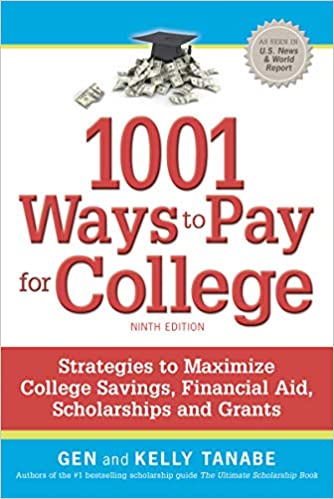College is an investment in your future. With few exceptions, you are going to have to contribute some of your own money to pay for it. Even though we won a lot of scholarships—more than $100,000 between the two of us—we still had to fork over some of our own money to pay for tuition. While it is always better to get free cash from scholarships and financial aid, the reality is that the more you save, the more options you'll have.
As we discovered, a personal savings account is the best ally when it comes to paying for college. Scholarships will always be competitions with no guarantees that you'll win. Financial aid changes each year depending on the budgets of the government and college. There is no guarantee, even if you deserve it, that you will receive all the financial aid that you need. But your savings is the money over which you have 100 percent control.
There is one last benefit of saving. Since it is your cash or your family's hard-earned money that you use to pay for college, it puts a real value on the price of your education. When we were at Harvard, we met students from a variety of backgrounds. For some, their parents had so much money that Harvard tuition was a drop in the bucket. For others, it seemed like the family had to mortgage everything they owned just to pay for it. Can you guess which students worked harder? The students who felt the enormity of the price of their educations applied themselves and achieved far more than those whose educations were handed to them on silver platters. This may not seem like much of a consolation now when you are eating Cup-O-Noodles in order to cut expenses; but trust us, it does pay off in the long run.
Important: Before we begin, remember that this information is meant to provide general guidance about your saving options. You should always check with an accountant regarding your individual situation to make sure that tax laws haven't changed.
1
Grow your money tax-free with the Coverdell Education Savings Account.
Saving your money is a good thing, but it's even better when your money grows without having to pay the tax collector. This is the primary benefit of the Coverdell Education Savings Account (ESA). Once a family sets up an account and names a beneficiary (who must be under the age of 18), they can start contributing up to $2,000 per year to the account to invest in any combination of stocks, bonds, mutual funds, certificates of deposit, money market funds and just plain cash.
As the money grows, you are allowed to defer paying federal income taxes. In many states you will not have to pay state taxes either. When you are ready to use the money to pay for the beneficiary's educational expenses—which can include tuition, room and board, books and supplies, computers and transportation—you can withdraw the money tax free.
The big disadvantage of the Coverdell is the limit on who can contribute and how much can be given each year. Families can contribute only up to $2,000 a year per child. If you only have a year or two before your child goes to college, you're not going to be able to realize a lot of tax-free gains. Also, to be able to contribute the $2,000 per year maximum, you must have a modified adjusted gross income of $95,000 or less if you are a single tax filer, or $190,000 or less if you are married and file jointly. If you make more than this, the amounts of your contributions are gradually reduced. If you earned more than $110,000 as a single filer or $220,000 as a joint filer, you cannot contribute to a Coverdell account.
2
You can contribute to a Coverdell even if you are over the income limit.
If you exceed the income limits of the Coverdell ESA, you can still take advantage of the Coverdell by gifting the $2,000 to your child and having him or her open the account. This is also a way for relatives to contribute to your son or daughter's Coverdell. Remember that the total amount that your child can contribute to a Coverdell (regardless of where the money comes from) is $2,000 per year.
3
Grow your money tax-free with a 529 Savings Plan.
The 529 Savings Plans are the toast of the town among many financial advisors. They are popular not because they have had phenomenal rates of return (many plans lose value during a down stock market) but because they allow families to tuck away a lot of money tax free. Contribution limits are much higher than the Coverdell with some plans capping the contribution at more than $300,000 per student. Plus, there are no income limits to who can contribute to a 529 Plan, which means that every family member can participate, including rich Uncle Leo.
The 529 Savings Plans are offered by every state, and many states offer more than one plan. You don't have to participate in your own state's plan and are free to sign up for any of the 529 Plans that are out there. However, you should check your state's tax regulations since some states allow you to take a state tax deduction on the money you put into a 529 Plan. All the money that you put into a 529 Plan will grow free from federal income tax and, depending on your state, may also be free from state taxes as long as you use the money for qualified college educational expenses.
Unlike the Coverdell, all the money that you put into a 529 Plan must be used for college-related expenses or else you pay taxes on any gains as well as a stiff 10 percent penalty. Fortunately, 529 Plans are very flexible when it comes to changing the beneficiary since the money stays in your control. Even if you opened a 529 Plan for one child, you don't have to use that money for that child. You can use the money from your 529 Plan for any member of your family, including yourself.


